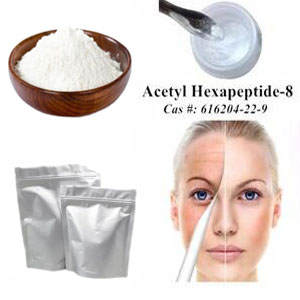Is Acetyl Hexapeptide-8 safe?

Acetyl Hexapeptide-8 has become a widely used ingredient in many anti-aging skincare products, often marketed as a safer alternative to more invasive treatments like Botox. As its popularity grows, questions around its safety are becoming more common. Based on available research and real-world use, Acetyl Hexapeptide-8 is generally considered safe for topical application. It works by targeting muscle contractions beneath the skin, helping to reduce the appearance of fine lines and wrinkles. Most users tolerate it well, but like any cosmetic ingredient, it may not be suitable for everyone. Understanding how it works, what potential side effects may exist, and who should avoid it can help consumers make informed decisions about incorporating it into their skincare routine.
What Is Acetyl Hexapeptide-8?
Acetyl Hexapeptide-8, also known as Argireline, is a synthetic peptide that mimics the action of a protein found in the SNARE complex, which is involved in muscle contraction. By interfering with this process, it helps relax facial muscles and reduce wrinkle formation, especially on the forehead and around the eyes. It’s often included in serums, creams, and lotions designed for anti-aging and smoothing effects. Unlike injectables, it doesn’t require needles and can be applied directly to the skin, making it accessible for home use.
Clinical Studies and Safety Profile
Multiple studies have looked at the safety and effectiveness of Acetyl Hexapeptide-8. Research shows that when used in concentrations up to 10%, it does not typically cause skin irritation or allergic reactions. Its safety has been evaluated by the Cosmetic Ingredient Review (CIR) Expert Panel, which concluded that it is safe for use in cosmetic formulations. However, long-term studies are still limited, so its full safety profile over years of use is not yet fully established.
Possible Side Effects
Most people experience no issues when using products containing Acetyl Hexapeptide-8. However, as with any skincare ingredient, there is a possibility of side effects, especially for individuals with sensitive skin. Reported reactions include mild irritation, redness, or a tingling sensation shortly after application. These effects are generally short-lived and can often be avoided by doing a patch test before using a new product. It's also important not to combine it with harsh active ingredients that might increase sensitivity.
Who Should Avoid It?
Although it’s safe for most users, people with known skin allergies or conditions like eczema or rosacea should consult a dermatologist before using Acetyl Hexapeptide-8. Pregnant or breastfeeding individuals should also seek medical advice, as research on use during these periods is limited. Those using prescription skincare treatments should check for interactions to avoid overloading the skin with active ingredients.
How to Use It Safely
To get the best results, apply a small amount to clean, dry skin, targeting areas where fine lines are most visible. It can be used in both morning and evening routines. Always follow the instructions on the product label, and if any discomfort occurs, discontinue use and consult a professional. Choosing a reputable brand with transparent ingredient lists also helps ensure quality and reduce the risk of irritation.


